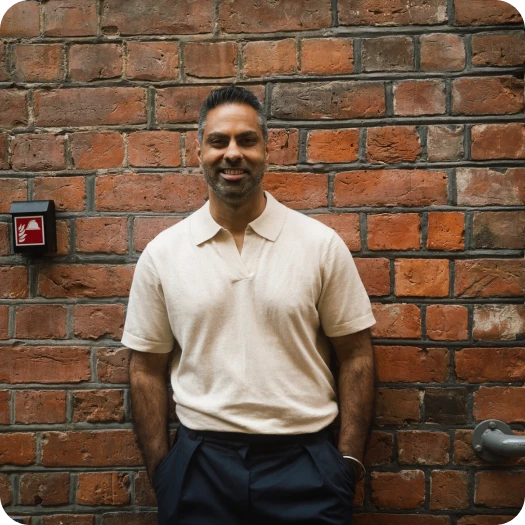Rich Dad Poor Dad: Good Advice Buried in Bad Ideas


Robert Kiyosaki and Sharon Lechter's bestselling book Rich Dad Poor Dad has dominated financial literature for decades, but I have a problem with this beloved financial "classic"—and it starts right after the first chapter.
Some parts hit, others completely miss, and I think it’s important to talk about both.
The Good (Albeit Brief) Parts of Rich Dad Poor Dad
I’ll give credit where it’s due. Rich Dad Poor Dad gets people thinking differently about money, and that alone makes it worth a look.
1. That magical first chapter
The opening chapter introduces a powerful idea: rich people make money work for them, while everyone else works for money. That shift in perspective is what hooks most readers, and for good reason. It nudges people to question whether the 9-to-5 grind is the only path forward, which is a valuable realization if you’ve never thought outside of a paycheck-to-paycheck life before.
Whether or not you agree with everything else in the book, this one message tends to linger—and it deserves the attention it gets.
2. Paying yourself first
Kiyosaki emphasizes the importance of putting money aside for your future before paying bills or buying things you want. That simple discipline sounds obvious, but most people don’t follow it. It forces you to treat savings like a non-negotiable expense instead of something optional you get to “if there’s anything left.”
Over time, this habit builds real financial stability, even on a modest income. It encourages prioritizing long-term wealth instead of living in permanent catch-up mode.
3. Understanding assets vs. liabilities
One of the most famous takeaways from the book is learning the difference between assets (things that make you money) and liabilities (things that drain it). Kiyosaki’s definition of assets and liabilities might be overly simplified, but it still drives home an important point: assets should make you money, and liabilities cost you money. He encourages readers to spend less time trying to look rich and more time building things that actually grow their wealth.
That core lesson of focusing on acquiring income-generating assets is a major wake-up call for people who think buying a nice car or a big house equals financial success. It’s not revolutionary, but it’s effective.
4. The importance of financial education
Another enduring idea from the book is that no one else is going to teach you how to manage money, so you need to teach yourself. That call to take ownership of your financial learning is one of the more empowering takeaways from the book. It encourages curiosity and continuous learning, which is critical in a world where financial systems are complicated and constantly evolving.
5. Questioning financial assumptions
Rich Dad Poor Dad challenges some deeply ingrained beliefs, like the idea that owning a house is always a smart investment, or that job security should be your top goal. Kiyosaki pushes readers to ask why they believe what they do about money and whether those ideas still serve them.
That mindset shift, even if it’s delivered with a bit too much bravado, is useful. It reminds readers that financial advice isn’t one-size-fits-all and that some conventional wisdom might be holding them back more than it’s helping.
Why I Recommend Stopping after Chapter One
After you finish reading that first chapter, immediately stop. Don't even look at chapter two. Why such a dramatic recommendation? Let me explain.
1. The questionable investment advice
Once you get past the introduction, the book starts drifting into risky territory. Kiyosaki pushes real estate investing like it’s some kind of golden ticket, but he glosses over how expensive, complicated, and time-consuming it really is. Buying property isn’t something most beginners can casually jump into—it takes capital, credit, and serious knowledge.
Then he casually tosses in penny stocks and IPOs as fast ways to “make a killing,” which is reckless advice for someone who’s just starting out. These are speculative moves that require experience, not blind enthusiasm.
And the bit about earning 16% through tax liens? That’s not beginner-friendly; it’s a complicated legal maze that can go sideways fast. Kiyosaki sells these ideas like shortcuts to wealth, but without a solid foundation, they’re actually potential disasters.
2. The MLM recommendation red flag
Kiyosaki casually suggests joining a multi-level marketing (MLM) company to “learn how to sell,” which is alarming. MLMs are notorious for overpromising and under-delivering. Most people who get involved end up losing money, not making it. They’re pressured into buying inventory, recruiting others, and selling overpriced products—usually to their own social circle.
It’s a predatory system that thrives on desperation, not skill development. There are plenty of legitimate ways to build sales experience, whether through freelancing, customer service roles, or taking on business development work. Recommending MLMs as a teaching ground is irresponsible at best and exploitative at worst, like saying you should crash a car to learn how to drive. It’s advice that’s not just bad, but dangerous.
3. The lack of actionable steps
For a book that claims to teach people how to get rich, Rich Dad Poor Dad doesn’t actually tell you what to do with your money. It’s full of vague encouragement but offers almost no concrete steps. There’s no budget advice, no investment plan, no timeline—just big-picture theory and inspirational one-liners.
That’s fine if all you want is a motivational push, but if you’re looking to actually do something with your money, you’ll walk away empty-handed. I’ve talked to countless readers who say they felt fired up after finishing the book, only to realize they had no idea what to do next.
For something more practical, check out my guide on how to actually build wealth, which bridges the gap between inspiration and execution.
4. The “poor people are dumb” undertone
A lot of people don’t notice it on their first read, but the way Kiyosaki talks about poor people is a real problem. He paints them as lazy, unambitious, or ignorant, while portraying his “Rich Dad” character as some wise financial wizard. It comes off smug and dismissive, completely ignoring real-life factors like generational poverty, systemic barriers, and economic inequality.
Not everyone who struggles financially is clueless or lazy. For many people, the system is just rigged—and mindset alone won’t fix that. Kiyosaki’s tone lacks empathy, and it often feels like he’s punching down. It’s not just unhelpful; it’s gross.
5. The bizarre evolution
What starts as a solid personal finance story eventually veers into bizarre territory. Over the years, Kiyosaki’s advice has gotten more extreme, sometimes bordering on doomsday prepping. He’s talked about investing in canned tuna and prepping for economic collapse—and not in a joking way.
That’s a far cry from teaching people how to understand assets and liabilities. It’s hard to take someone seriously when their financial advice starts sounding like something from a survivalist YouTube channel. At a certain point, you have to ask: Is this still about helping people build wealth, or is it just about selling fear?
Red Flags When You’re Evaluating Financial Gurus
As I’ve mentioned in my YouTube video on why you should stop listening to financial “gurus”, Rich Dad Poor Dad starts off strong, but things go downhill fast. When you treat a book like Rich Dad Poor Dad as gospel, you set yourself up for falling for other financial “gurus” too.
When you read about a new financial expert, here are some red flags to consider if you want to avoid getting caught in a financial trap:
1. They’re coy about their money sources
If a financial guru won’t tell you exactly how they make their money, that’s your first red flag. Transparency should be non-negotiable. A lot of these personalities make their income not from investing or running businesses, but from selling courses, books, and coaching programs to people looking for a way out. That creates a conflict of interest: they benefit more from your attention than your success. If they can’t clearly show how their personal finances back up their advice, it’s worth questioning whether they follow it themselves.
2. They charge percentage-based fees
If you’re hiring a financial advisor, look for someone who charges a flat or hourly fee, not a percentage of your assets. Percentage-based fees can lead to misaligned incentives, where advisors prioritize growing your portfolio (to boost their own earnings) instead of offering tailored advice that suits your actual goals.
It’s a subtle difference, but it matters. Flat-fee advisors don’t benefit from selling you expensive products or pushing risky investments, so they’re often more trustworthy.
3. They don’t practice what they preach
The ultimate red flag is when a financial expert doesn’t live by the advice they give. If someone is promising 20% returns while their own company is floundering or filing for bankruptcy, that’s not a minor detail—that’s a credibility problem.
No one’s perfect, and everyone makes mistakes, but consistent failure or hypocrisy should make you pause. Good advice comes from real experience, not just flashy talk. Make sure the people you're learning from actually walk the walk.